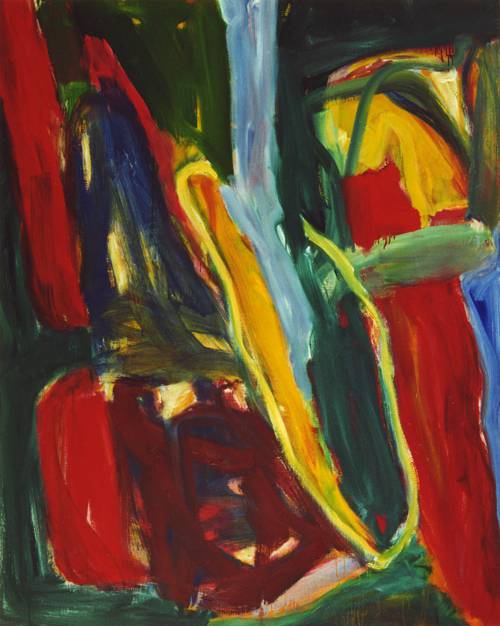
FAQ About The Influence of Abstract Expressionism on Modern Art Practices

What is Abstract Expressionism?
Abstract Expressionism is an art movement that emerged in the United States during the late 1940s and reached its peak in the 1950s. It is characterized by the emphasis on spontaneous, automatic, or subconscious creation. Notable for its focus on emotional expression, the movement is closely associated with New York City artists. Key figures include Jackson Pollock, Mark Rothko, and Willem de Kooning.

How did Abstract Expressionism impact modern art techniques?
Abstract Expressionism introduced innovative techniques that have had a lasting impact on modern art. Techniques such as action painting, famously used by Jackson Pollock, involved dripping or flinging paint onto a canvas, thereby emphasizing the physical act of painting itself. This approach has been emulated and adapted by subsequent generations of artists, who continue to explore the boundaries of art-making through innovative techniques and materials.

What philosophies underpin Abstract Expressionism?
Abstract Expressionism is rooted in the belief that art should express deeper, universal truths and emotions. It is influenced by existentialism, which emphasizes individual experience and freedom. Artists sought to convey their inner emotional states and the complexities of human emotion through large-scale, non-representational works, pushing beyond the constraints of conventional forms and techniques.

Who are some contemporary artists influenced by Abstract Expressionism?
Contemporary artists such as Gerhard Richter and Christopher Wool have been influenced by Abstract Expressionism. Gerhard Richter, for example, incorporates aspects of abstraction into his photo-paintings, exploring themes of perception and history. Similarly, Christopher Wool's use of layering and erasure techniques can be traced back to the spontaneity and dynamism of Abstract Expressionist works.

In what ways does Abstract Expressionism influence modern art movements?
Abstract Expressionism has influenced various modern art movements by encouraging the exploration of abstraction and freeing artists from the traditional constraints of representation. Movements such as Minimalism, Conceptual Art, and Neo-Expressionism have all drawn from the Abstract Expressionist emphasis on individual creative freedom and emotional depth.

What role did New York City play in the Abstract Expressionism movement?
New York City played a crucial role as the epicenter of the Abstract Expressionism movement, often referred to as the "New York School." The city's vibrant cultural scene provided a fertile ground for artists to gather, collaborate, and exhibit their work. The movement helped establish New York as a leading art center, shifting the global art capital from Paris to New York in the mid-20th century.

How do modern artists incorporate the techniques of Abstract Expressionism?
Modern artists incorporate the techniques of Abstract Expressionism by utilizing its experimental approaches such as action painting, gestural abstraction, and automatic drawing. These techniques allow artists to explore emotional depth and immediacy in their work, often using mixed media and unconventional materials to challenge traditional artistic boundaries.

What distinguishes Abstract Expressionism from other art movements?
Abstract Expressionism is distinguished from other art movements by its focus on spontaneity, personal expression, and non-representational imagery. Unlike movements that adhere more closely to realistic depictions, Abstract Expressionism emphasizes emotional intensity and the artist's subjective experience as conveyed through abstract forms and dynamic compositions.

Why is Abstract Expressionism considered a significant 20th-century art movement?
Abstract Expressionism is considered a significant 20th-century art movement because it marked a shift in the center of the art world from Europe to America and introduced a new form of visual language that emphasized personal and emotional expression. It challenged conventional techniques and perceptions of art, paving the way for a more diverse and globalized art scene.

Can Abstract Expressionism be linked to cultural or political influences?
Abstract Expressionism is linked to cultural and political influences of its time, particularly the aftermath of World War II and the tensions of the Cold War. Artists sought to express feelings of anxiety, freedom, and existential concern. The movement was also supported by the American government during the Cold War as a promotion of cultural freedom and individuality against Soviet ideology.

How did Abstract Expressionism affect the perception of American art globally?
Abstract Expressionism significantly affected the perception of American art globally by establishing the United States as a leading force in the contemporary art world. The movement demonstrated that American artists could create groundbreaking work that resonated on an international scale, thereby shifting the focus of avant-garde art from Europe to the United States.

What are some of the challenges modern artists face when inspired by Abstract Expressionism?
Modern artists inspired by Abstract Expressionism face challenges such as balancing innovation with authenticity and avoiding mere imitation. They must carve out a personal vision while reflecting the spirit of spontaneity and emotional depth that characterizes the movement. Additionally, contemporary societal changes can require artists to reinterpret Abstract Expressionist principles in ways that resonate with today's audiences.

How does Abstract Expressionism influence art education today?
Abstract Expressionism influences art education by encouraging students to explore creativity beyond traditional boundaries. Art programs often emphasize experimentation, emotional expression, and individual exploration, which are key aspects of Abstract Expressionism. This approach fosters a greater understanding of the dynamic and evolving nature of art among students.

What misconceptions might people have about Abstract Expressionism?
Common misconceptions about Abstract Expressionism include the belief that it is devoid of skill or meaning because of its abstract nature. However, the movement is deeply rooted in technical proficiency and complex conceptual foundations, focusing on emotional expression and subconscious creativity. Understanding the context and intentions behind the works can dispel these misconceptions.

Are there specific materials associated with Abstract Expressionism?
Abstract Expressionists often used materials that allowed for spontaneous and dynamic expressions, such as oil paints and large canvases. They frequently employed unusual tools and techniques, like sticks and palette knives, to apply paint in unconventional ways, further emphasizing the movement's focus on personal expression and the physical act of painting.

How did the public initially react to Abstract Expressionism?
The initial public reaction to Abstract Expressionism was mixed, with some critics dismissing it as chaotic or incomprehensible. However, other art aficionados and critics appreciated its innovative approach and the emotional depth conveyed through its abstract forms. Over time, the movement gained substantial acclaim and became recognized as a pivotal development in modern art.

What are some key artworks from the Abstract Expressionist movement?
Key artworks from the Abstract Expressionist movement include Jackson Pollock's Lavender Mist, Mark Rothko's expansive color field paintings, and Willem de Kooning's Woman series. These works exemplify the movement's focus on emotion, abstraction, and innovative techniques.

How does digital art reflect the influence of Abstract Expressionism?
Digital art often reflects the influence of Abstract Expressionism through the use of vibrant colors, dynamic compositions, and abstract imagery. Digital artists may employ techniques reminiscent of action painting and gestural abstraction, using technology to create interactive and immersive experiences that echo the emotional depth and spontaneity of Abstract Expressionist works.

Is the influence of Abstract Expressionism still evident in contemporary galleries?
The influence of Abstract Expressionism is still evident in contemporary galleries, as many modern artists incorporate its techniques and philosophies into their works. Exhibitions featuring abstract and emotional art continue to draw audiences, highlighting how the movement's legacy endures in the evolving landscape of modern art.

How does Abstract Expressionism inspire non-visual art forms?
Abstract Expressionism inspires non-visual art forms such as music, dance, and literature by emphasizing emotion and spontaneity. Composers and performers might create pieces that echo the movement's improvisational nature, while writers may explore narrative forms that engage with the subconscious and emotional intensity inherent in Abstract Expressionist art.
